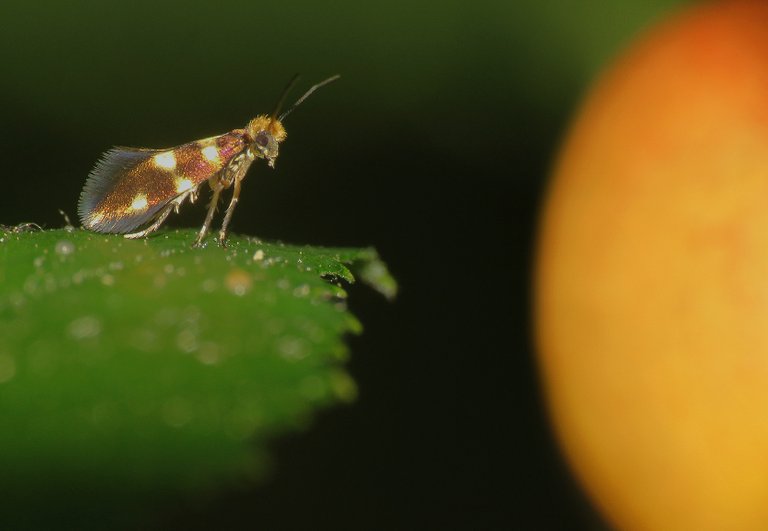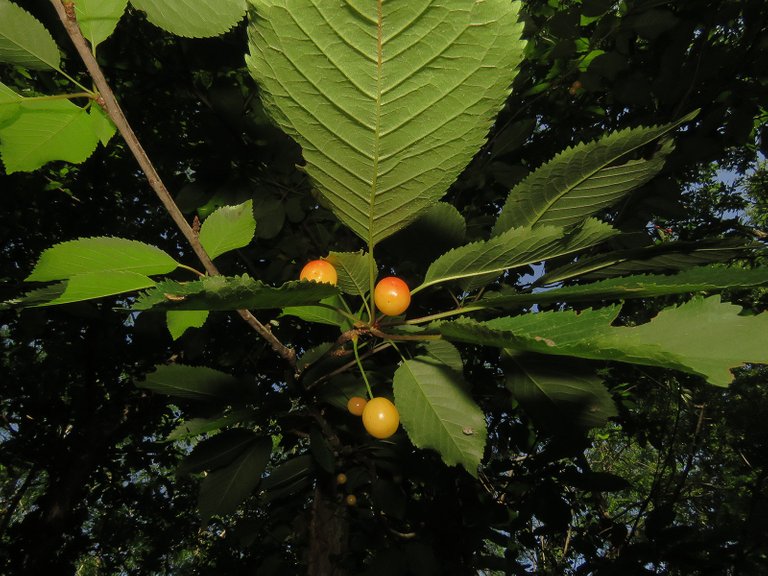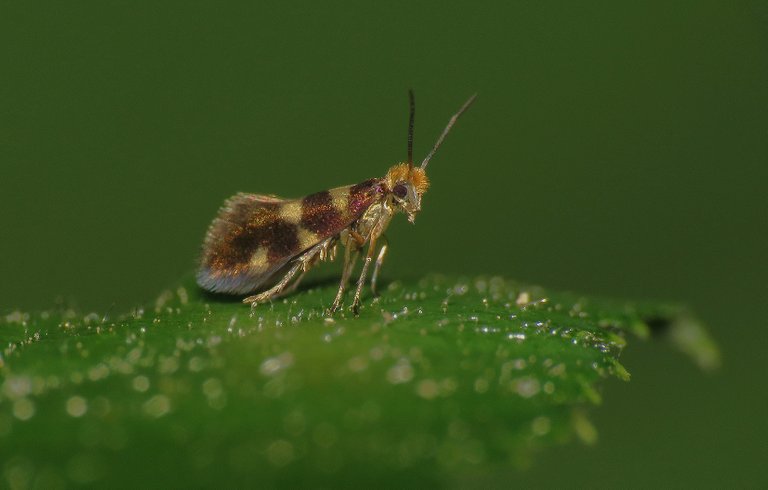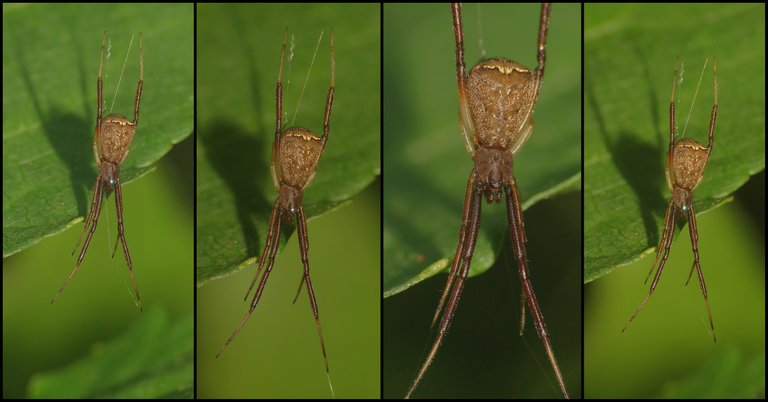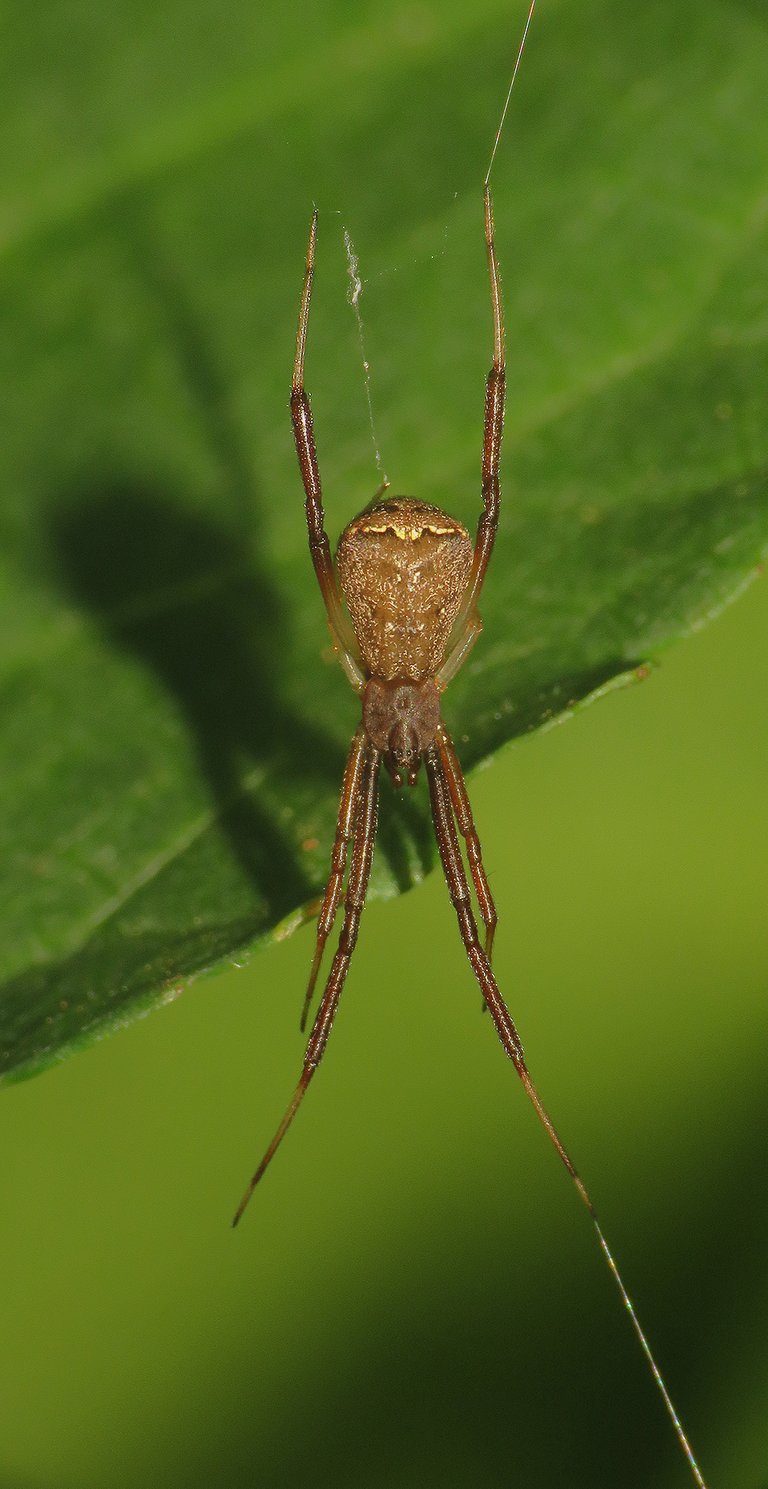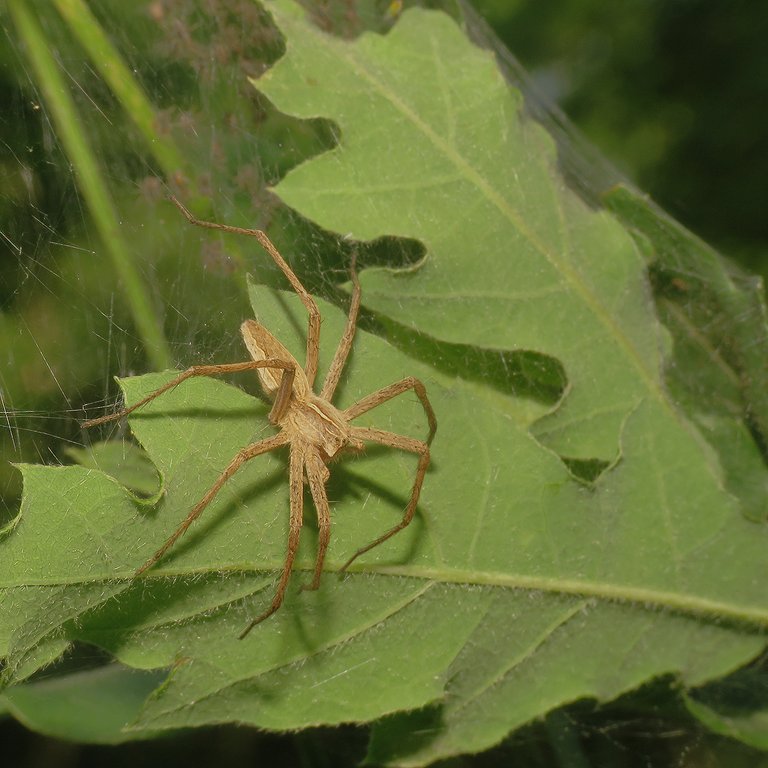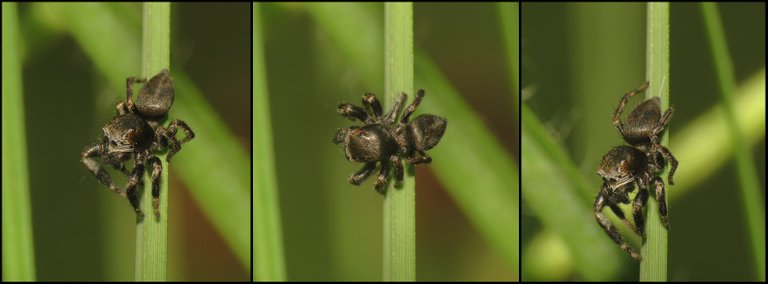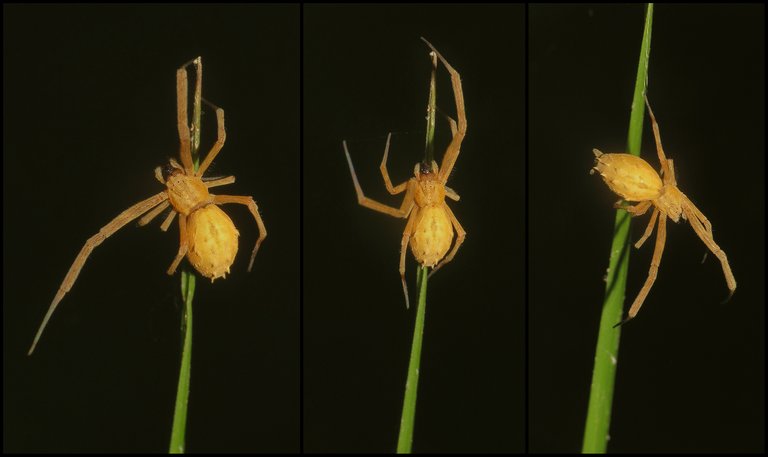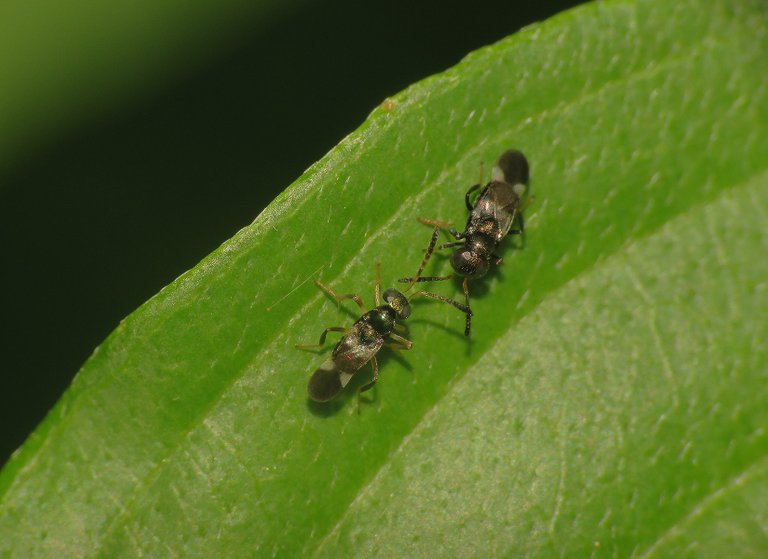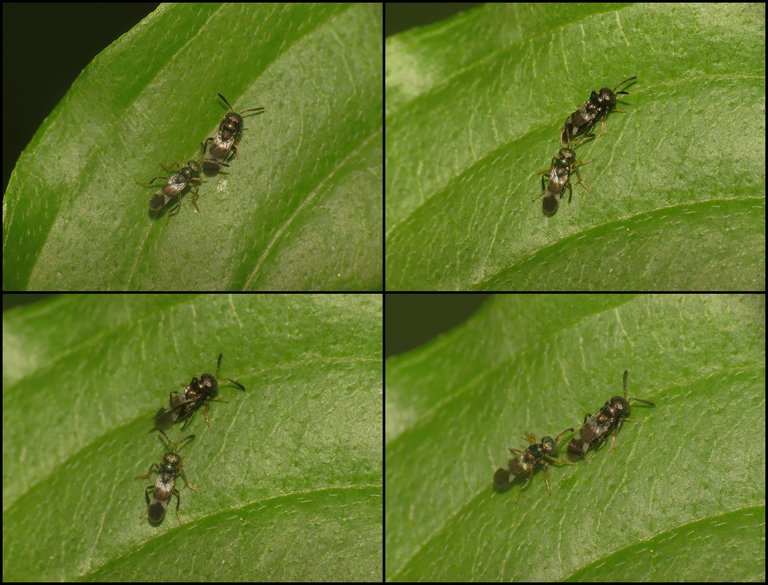Last year, on the 13th of July, I spent the whole morning in the woods between the small inland town called Zminj and the city of Pazin, situated right in the center of Istra, the peninsula on which southern cape I live. The weather was warm and sunny, it was a typical summer day, and I found a nice diversity of small arthropods to observe and photograph through the macro lens.
You can see a small moth in this opening photograph. A small moth from the Micropterigidae family. The colorful object, blurred in the background, that looks like a setting or rising sun, is just a small fruit, actually.
One of a handful of wild cherries on the Prunus avium tree.

It was early in the morning and I saw about a dozen small moths resting on the leaves of the lower branches of the cherry tree. Species from the Micropterigidae family are also known as archaic mandibulate moths. The species I encountered on that beautiful summer morning is the Micropterix allionella. In the following photograph ...
... especially if you enlarge the picture by clicking on it, you'll be able to take a good look at all the details of the moth's external anatomy. The head is definitely pretty peculiar. The moth resembles a tiny goat or antelope. Unique among the Lepidoptera (moths & butterflies), moths from the Micropterigidae family have chewing mouthparts instead of a proboscis. They use their mandibles mainly to chew the pollen grains. Today, after reading a bunch of studies & articles on the Internet, I learned that the common ancestor of moths and butterflies we can see today was probably a small species from the late Carboniferous, a species in which adults had mandibles.
Besides these scientific facts, I'll tell you a few words about my silly impressions regarding the Micropterix allionella. I mean, aren't they cute? Look at that face and the stylish orange hairstyle on its top. Imagine this tiny insect as a sheep-sized animal. The moth would look like some kind of shiny, winged gazelle, or something like that.
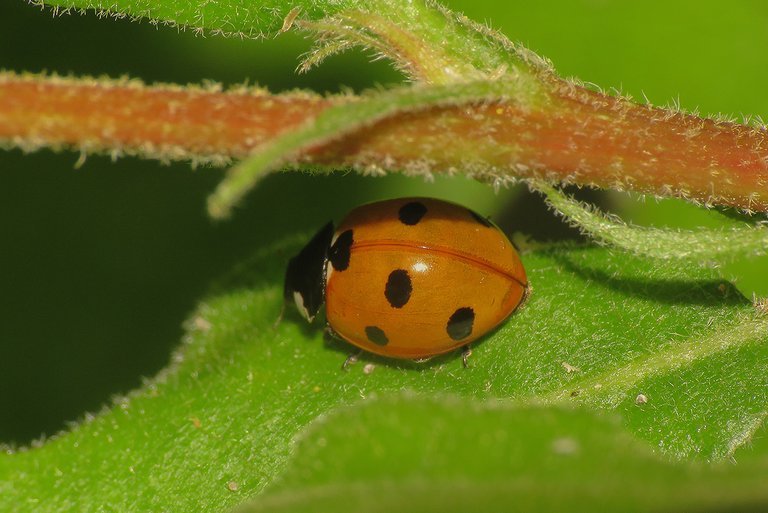
On the leaves of some herbaceous plant down on the forest floor ...
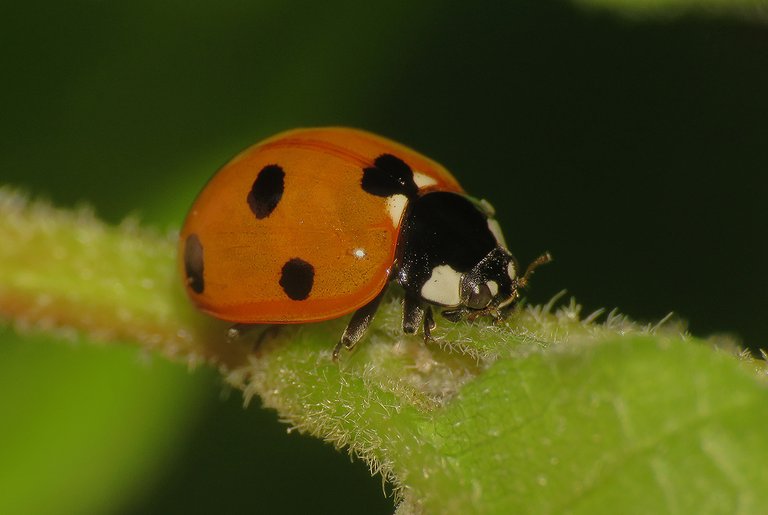
... I photographed a lady beetle. The Coccinella septempunctata.

Here you can see an interesting spider found on the herbaceous vegetation near the narrow path that leads through the forest.
The name of the species is Episinus angulatus.
The family is Theridiidae. Although present throughout Europe, the species isn't common and is a relatively rare encounter everywhere. The web of this spider roughly resembles the letter "H" and consists of only a few threads that reach from the lower branches of shrubs or herbaceous plants down to the ground. In the following photograph ...
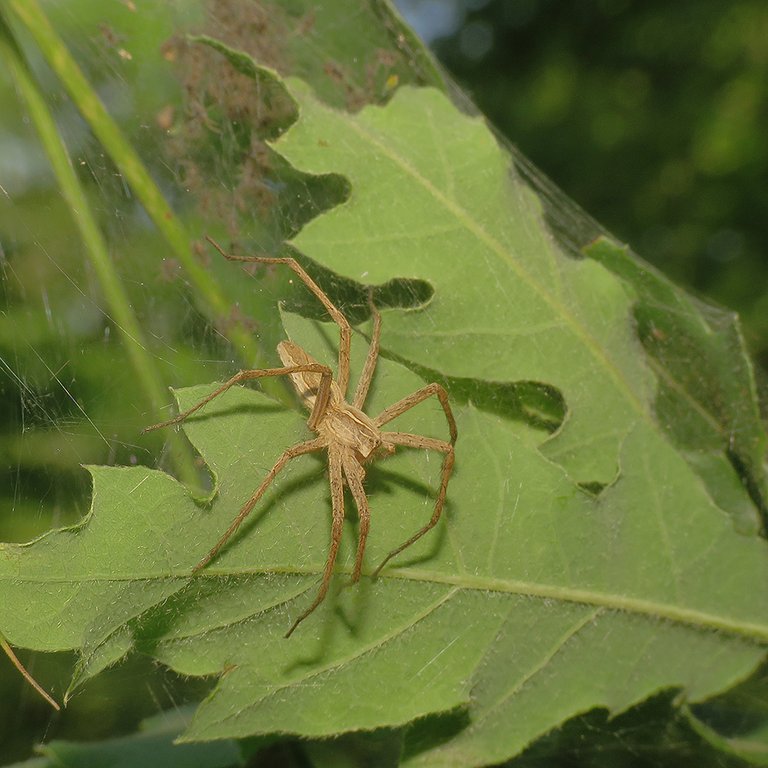
... you can see a much bigger spider from the Pisauridae family.
The name of the species is Pisaura mirabilis ...
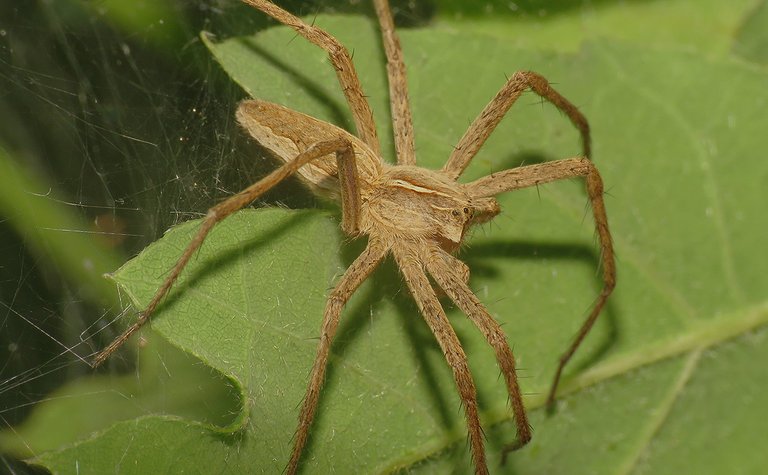
... and the spider shown in this set of photographs is a female. If you take a good look at the following photograph ...
... especially if you enlarge the picture by clicking on it, you'll notice a cluster of spiderlings blurred in the background. Females build nests in which the tiny young spiders spend the early stage of their life. In the foreground of this shot, you can see a Pisaura mirabilis female guarding the nest built among the leaves of the young, shrub-like oak tree.
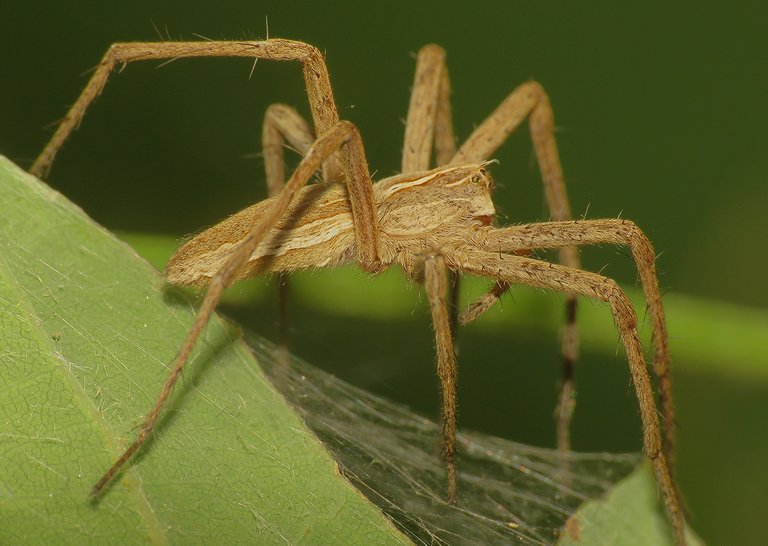
Here you can take another up-close look at this very common, but always interesting and remarkable spider. A bit further ...
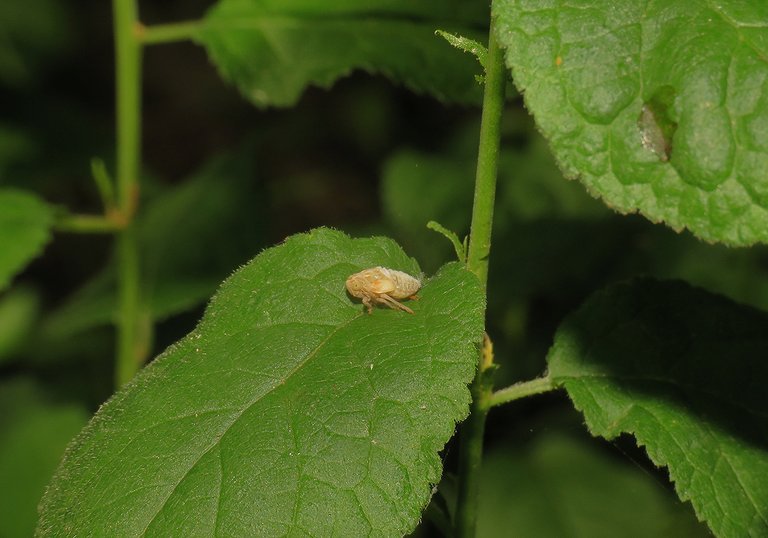
... I noticed an insect on one of the large leaves of a fairly tall and robust herbaceous plant. The insect was quietly resting ...
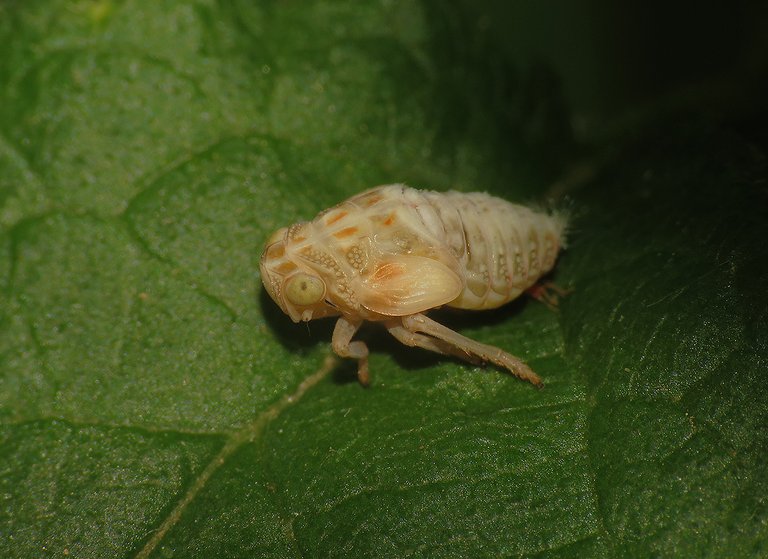
... so I was able to come closer ...

... and recognize the species. This is an Issus coleoptratus nymph ...
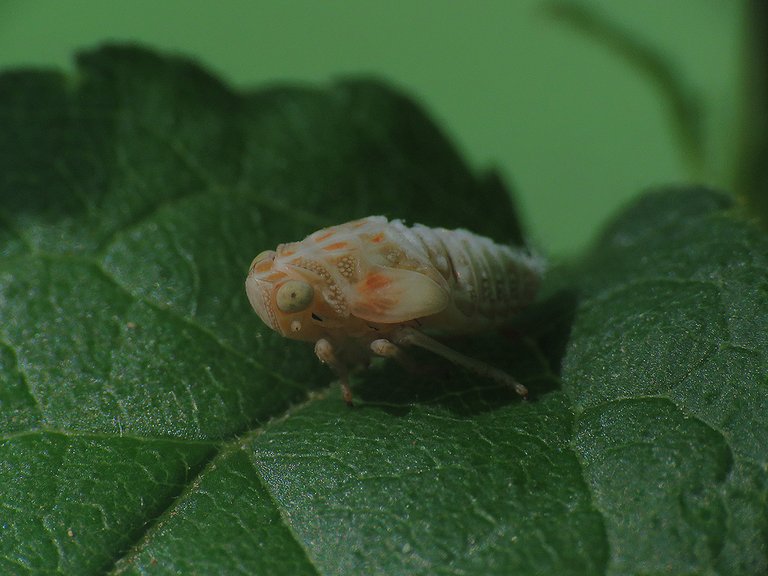
... that has recently gone through the molting. That's the reason for its soft, pale appearance and very calm demeanor.
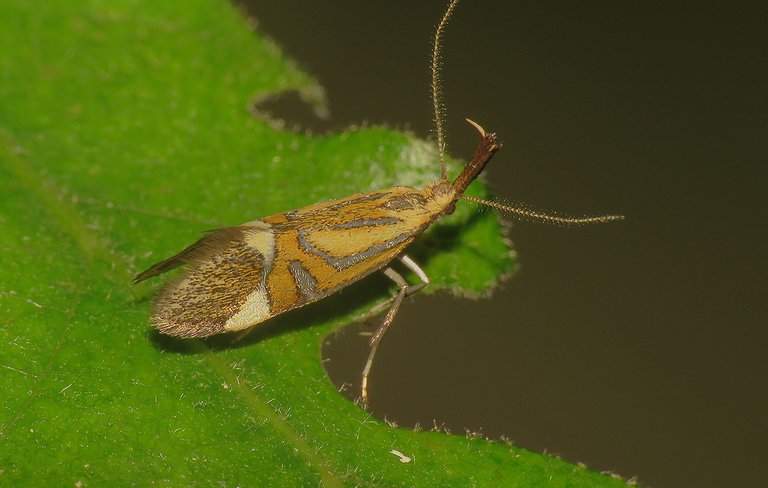
This interesting moth belongs to the Oecophoridae family. The name of the species is Alabonia geoffrella. The larvae feed on rotting wood.
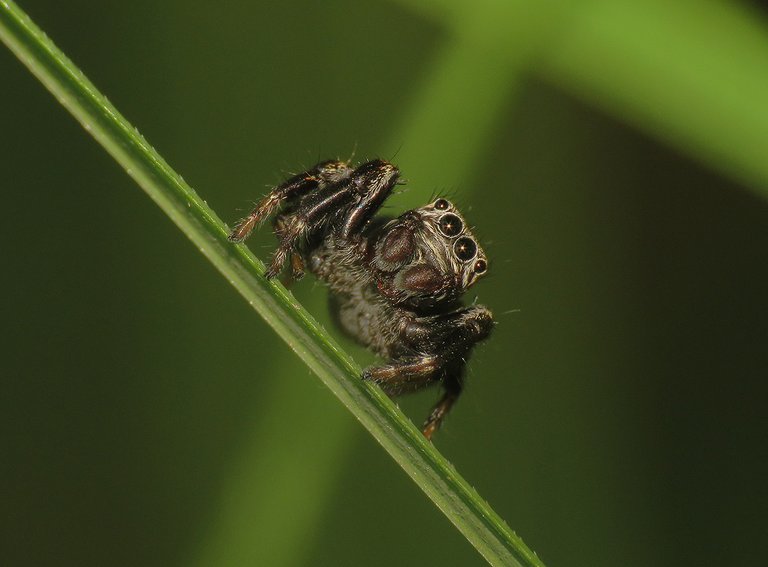
you can see a cute little jumping spider looking at you in this shot.
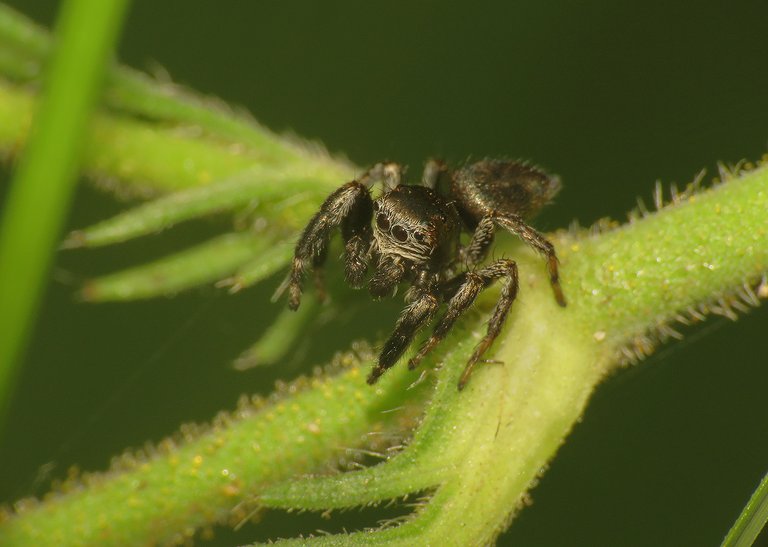
I can't tell you the name of the species.
The family is Salticidae, of course. That's all I can say in this segment of the post.
In this photograph, the spider is cleaning one of its hind legs.
I followed the jumping spider for about ten or fifteen minutes, and then ...
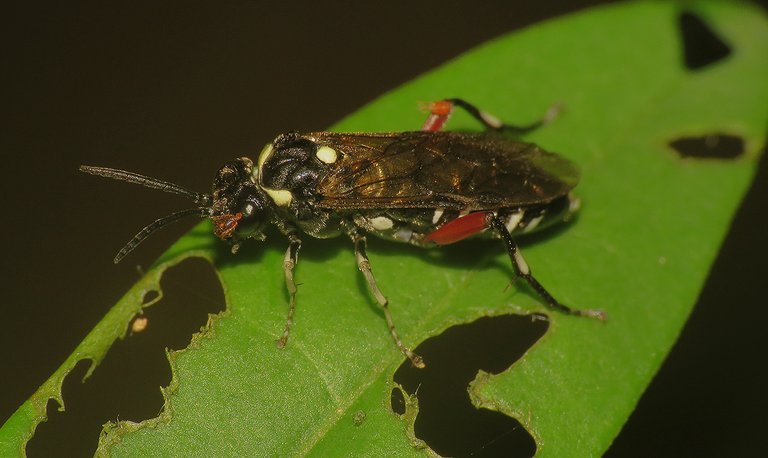
... I noticed a sawfly on one of the nearby plants.
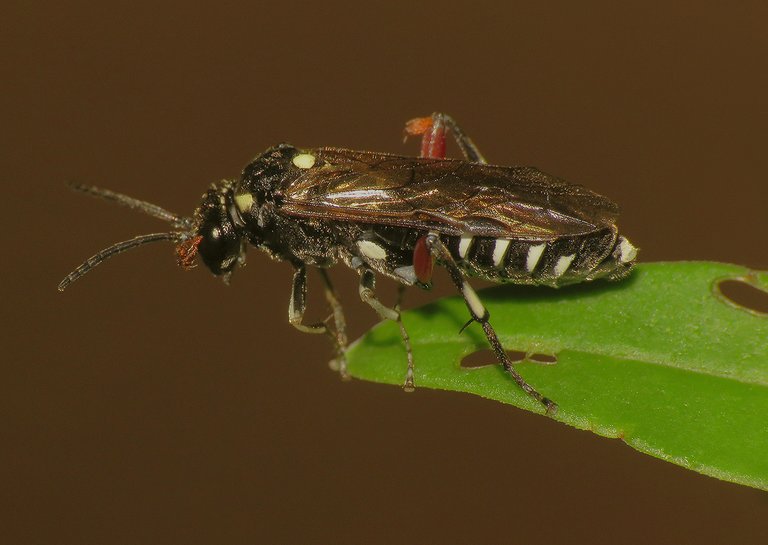
Today, while preparing the post, I found out that this is the Macrophya punctumalbum ...
... from the Tenthredinidae family. I don't remember seeing this species before or since that summer encounter in the woods about sixty kilometers north of my hometown.
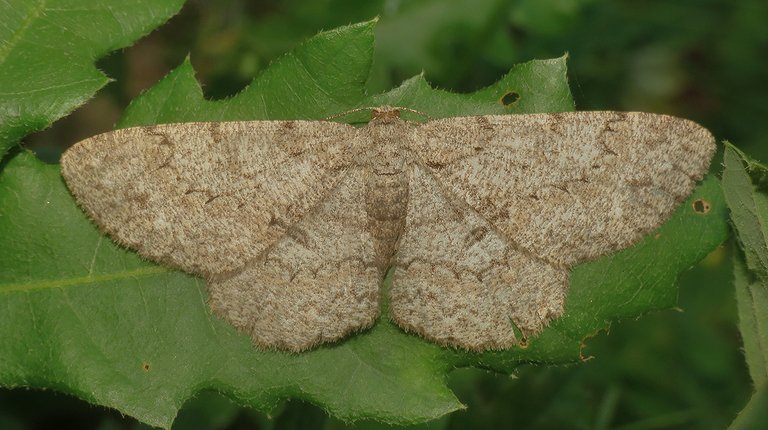
This fairly large moth from the Geometridae family was resting on one of the leaves of a young oak tree. Can't tell you the name of the species because quite a few very similar ones are present in this area. It could be the Hypomecis punctinalis. Or the Hypomecis roboraria. Or something else.

Another Episinus angulatus spider was resting on the grass under the small tree.

This is the Uloborus walckenaerius.
A spider from the Uloboridae family.
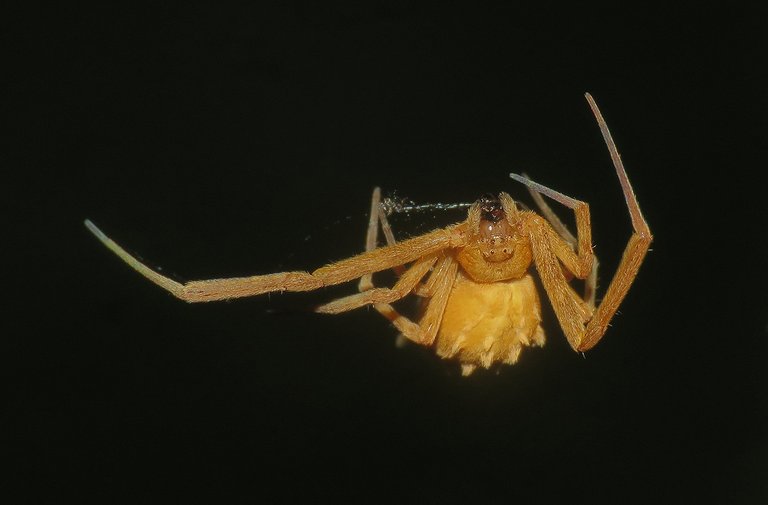
Just like the other species from that unique family, Uloborus walckenaerius has no venom glands.
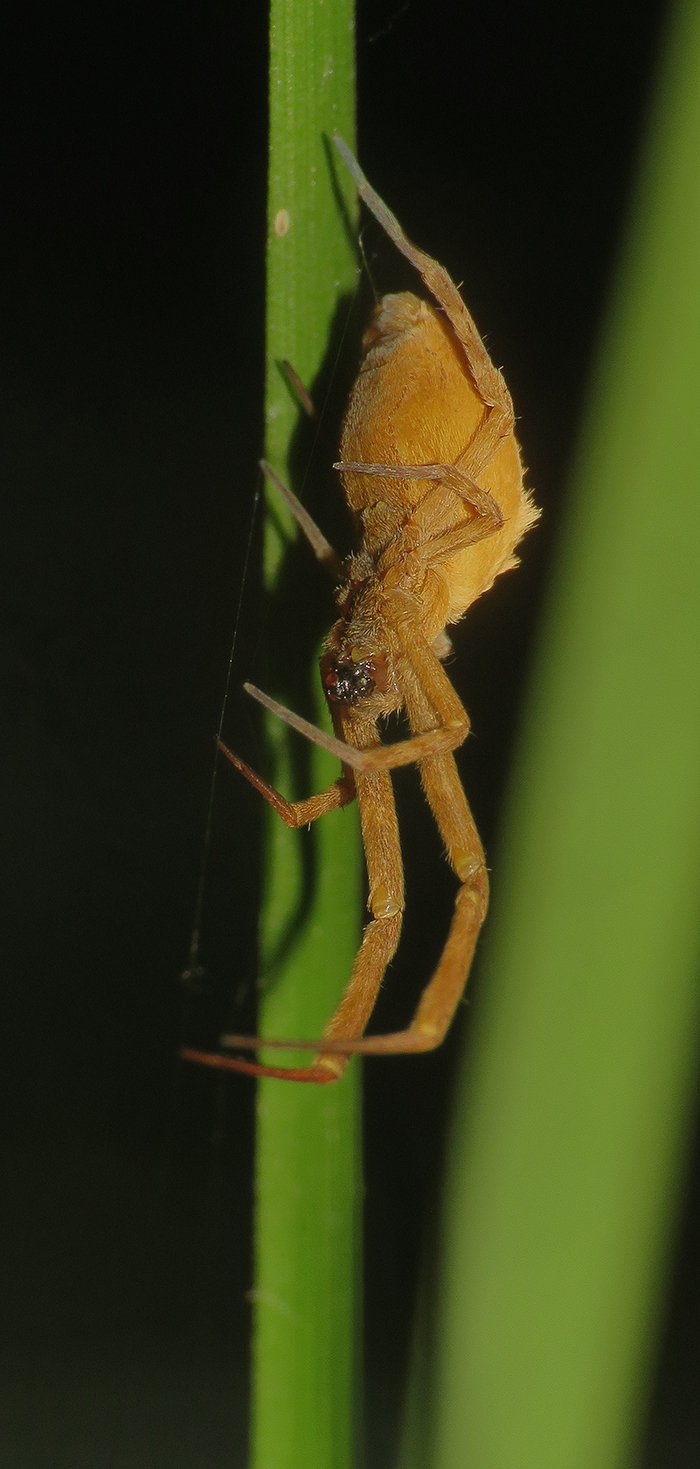
This spider weaves horizontal webs close to the ground.
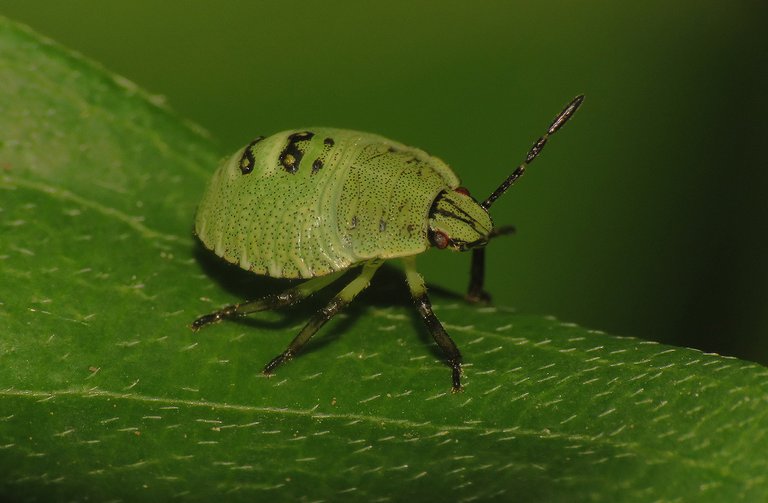
The lovely green shieldbug shown in this photograph is a Palomena prasina nymph.
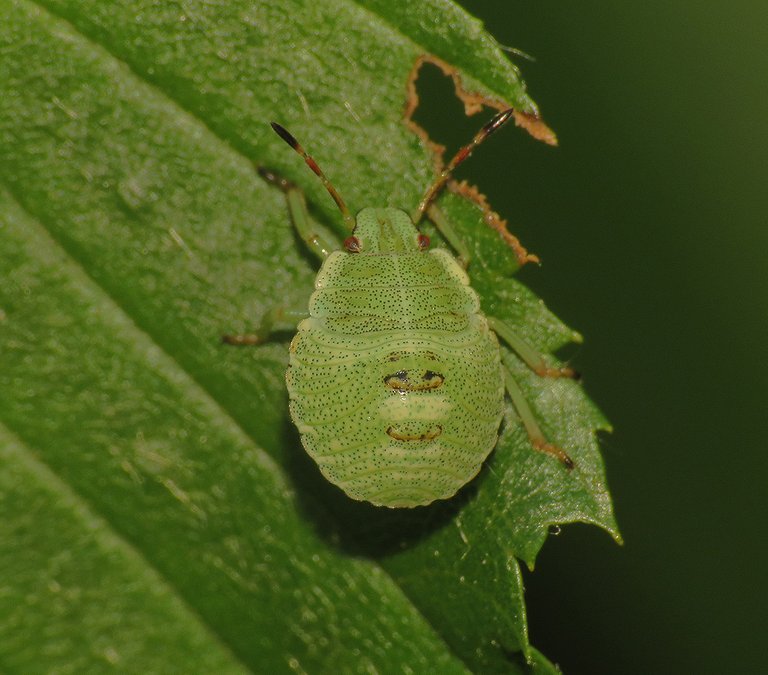
Here you can see another nymph of the same kind. Not far from these young shieldbugs, on the leaves of the same climbing plant that I can't identify today because I didn't photograph the plant parts from a distance that would allow identification ...
... I came across an interesting situation that I've never witnessed before.
Two very small insects were frenetically running around the leaf and behaving in a way that resembled some kind of ritual.
Today, after hours of searching the Internet, I found out that these are some small parasitic wasps from the Encyrtidae family. But I still have no idea about what species this could be.
The action was very fast, and therefore hard to follow through the macro lens.
I needed more than an hour to get these photographs. The majority of shots weren't good enough to be a part of this or any other post.
Was this some kind of pre-mating thing? Or something related to the territory? Or both. I don't know. But if I had to give my personal opinion, I would say that this behavior has a lot to do with mating.

The lovely moth shown in this photograph belongs to the Oecophoridae family. The name of the species is Harpella forficella. The larvae live in small groups on decayed wood and under the bark. They feed on the mycelia of various fungi that grow on decaying wood.
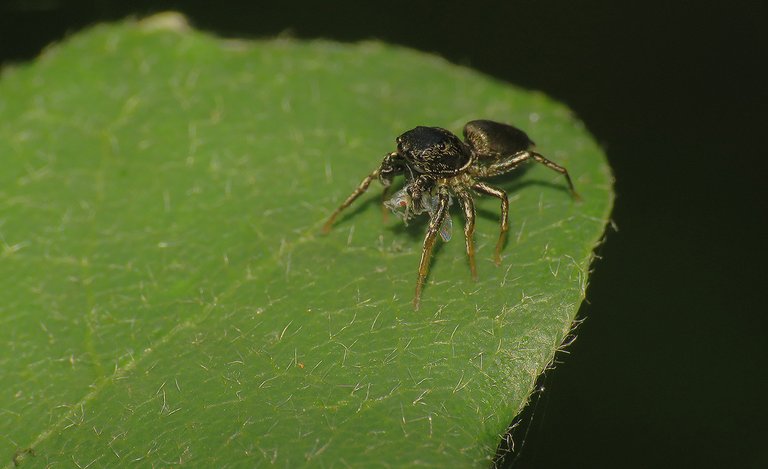
About half an hour later, I found another jumping spider. Heliophanus cupreus is the name of this Salticidae species, and the spider shown in this and the following photograph is a male.
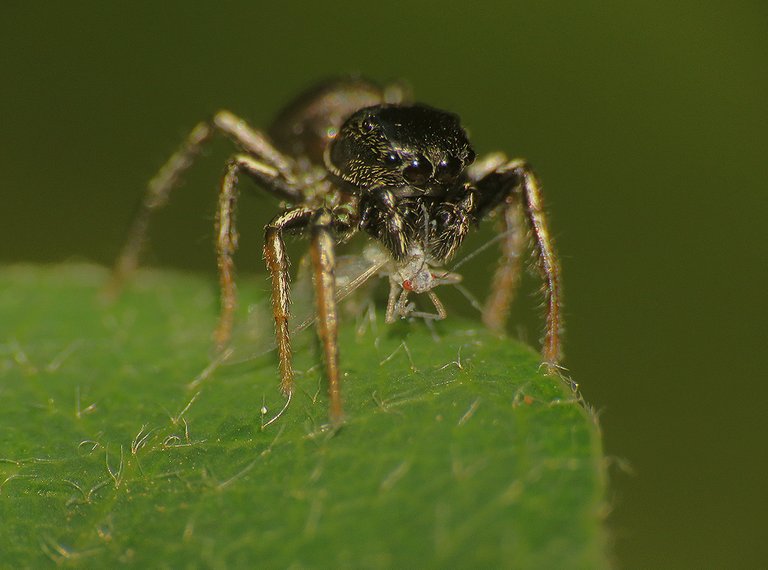
Here you can take a better, more up-close look at the small arachnid and the even smaller prey in its fangs. The spider has caught an aphid. Or some similar and related hemipteran insect.
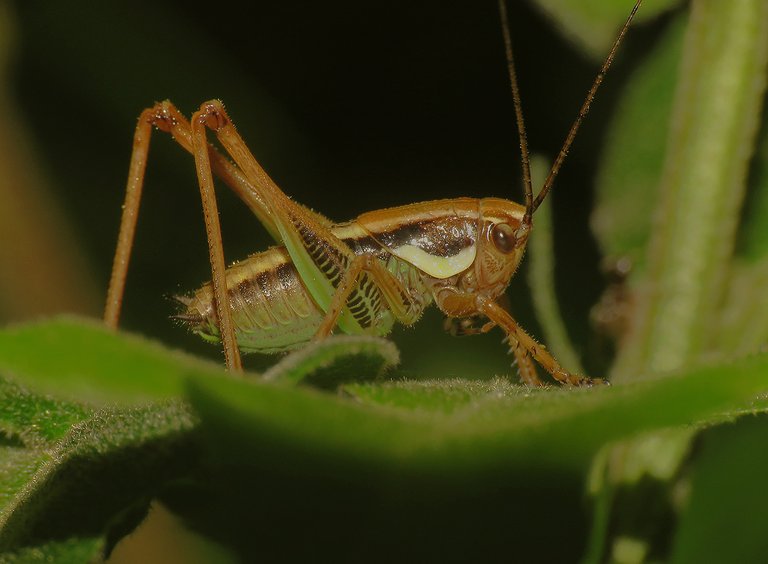
This is a bushcricket nymph. The name of the species is Eupholidoptera schmidti.
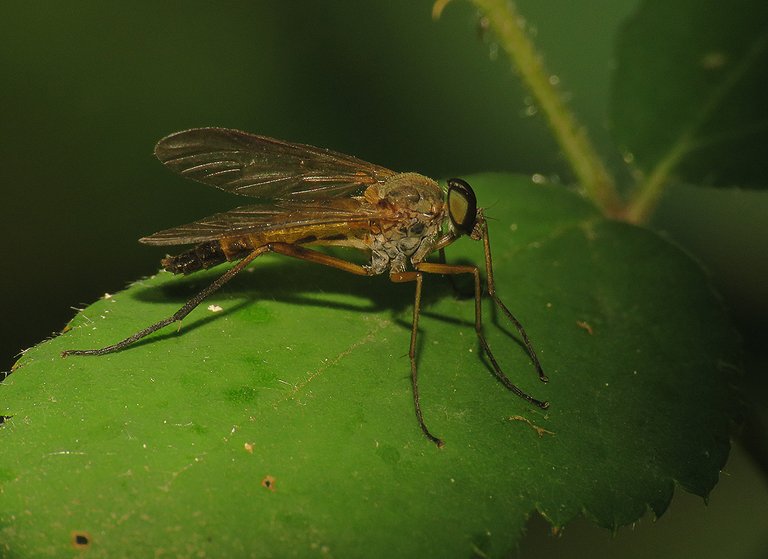
Here you can see the Rhagio tringarius, a fairly big fly from the Rhagionidae
family.
On the way back home, a couple of kilometers from Zminj, I came across the road crew busy renovating the white lines on the asphalt. In this shot, the workers look a bit like dancers. A boy band performing for a promotional video.
And that's it. The following links will take you to the sites with more information about some of the protagonists of this post. I found some stuff about them there.
https://en.wikipedia.org/wiki/Prunus_avium
https://en.wikipedia.org/wiki/Micropterix_allionella
https://en.wikipedia.org/wiki/Coccinella_septempunctata
https://www.inaturalist.org/taxa/318916-Episinus-angulatus
https://en.wikipedia.org/wiki/Pisaura_mirabilis
https://en.wikipedia.org/wiki/Issus_coleoptratus
https://ukmoths.org.uk/species/alabonia-geoffrella/
https://www.sawflies.org.uk/macrophya-punctumalbum/
https://en.wikipedia.org/wiki/Uloborus_walckenaerius
https://www.britishbugs.org.uk/heteroptera/Pentatomidae/palomena_prasina.html
https://en.wikipedia.org/wiki/Encyrtidae
https://bugguide.net/node/view/517238/bgimage
https://en.wikipedia.org/wiki/Harpella_forficella
https://www.flickr.com/photos/63075200@N07/8758790577
https://en.wikipedia.org/wiki/Heliophanus_cupreus#:~:text=The%20male%20has%20a%20long,may%20have%20uniformly%20dark%20legs.
https://en.wikipedia.org/wiki/Rhagio_tringarius
